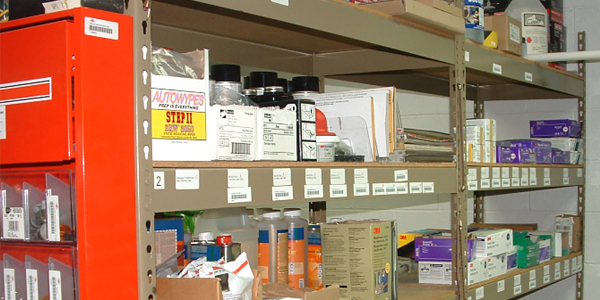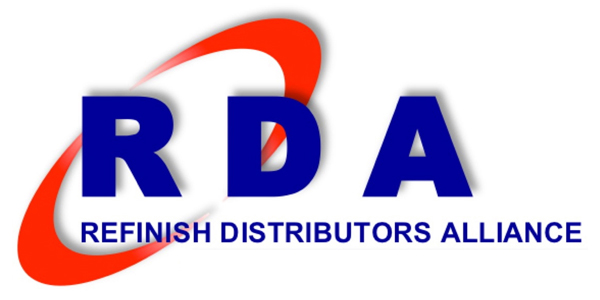
This article is the second in a series focused on how collision centers can benefit by working more closely with their PBE distributor to meet the demands of consumers and insurers. And, how distributors will benefit by more effectively responding to the needs of their collision customers.
In part 1 of this series (“What Makes a Good PBE Distributor”), I made the point that simply having the best products, people and service is no longer a differentiator for collision centers looking to partner with a distributor. I further recommended that distributors master certain core competencies. In addition, create the culture and processes required to consistently deliver those attributes in a way that distinguishes them from their competitors.
Key among those core competencies is inventory fulfillment. After all, regardless of whatever additional service we may perform, we’re in the product fulfillment business. Naturally, there is more to it than simply moving boxes. It’s a potentially complex process that requires a systematic approach and the active participation of both collision center and distributor personnel to keep it simple and efficient. For the sake of discussion, I will call it “simple inventory solutions.”
Inventory Fulfillment
“Why not just call the distributor when I need something? They promised fast delivery…”
In the past – and it is still practiced by some – the jobber sales rep dropped by the shop once or twice a week with a pad of paper and went around to everyone in the shop asking what they needed. Then, they would call the jobber store to read off the order to the counterperson.
This process was incredibly wasteful. It wasted techs’ time by interrupting their work and resulted in an incomplete order. That meant that techs had to stop work, again, to order what they really needed – when they discovered they needed it.
Phoning the order to the store meant that the counterperson had to write it down and separately enter items into the distributor’s point-of-sale system. This inevitably resulted in errors and the delivery of the wrong products. Again, work stopped to rectify the mistake, return the wrong product and reconcile a credit when the monthly statement was received.
This old process often resulted in over-stocking some items while under-stocking others. And, due to the general lack of organization, product was all over the place, making it all but impossible to write a meaningful order with no real way to know what was truly needed – which led to more stock-outs and production interruptions.
There was also a trust issue since many distributor salespeople are paid on commission (the more they sell, the more they make), creating the concern that they would overstock the customer to earn a higher commission.
This old style “can-kicker” process was costly to both the collision center and the distributor. We all knew it had to change! For years, many distributors and shops struggled to let go of old habits and embrace a better way – and it was especially challenging since they discovered that an entire industry could be wasteful and still be profitable. But those times have changed. Now, both distributors and collision centers must be accountable to improved performance.
Fundamentals of Inventory Fulfillment
A new model of distribution will reduce waste, eliminate production interruptions due to stock-outs, add more predictability to the entire process, and free distributor personnel to provide more business support to the collision center.
This is not intended to be a complete description of an ideal inventory process as there are many ways to achieve that result.
Many distributors are moving to electronic ordering processes to scan UPC or QR codes to capture and transmit orders. This is very efficient if done correctly, and I personally recommend using it if available. However, there are certain fundamentals that must be embraced regardless of how you or your distributor will write and place orders and whether or not it’s a manual or an electronic process.
The goal is for collision center technicians to have what they need when they need it, and to have inventories replenished in the most accurate and effortless process possible.
To achieve those objectives, the following elements are recommended:
- Embrace the concept of replenishment.
The most important aspect of the inventory fulfillment process is the idea of “inventory replenishment.” Simply stated, it means that when an item is used, it is replaced (or replenished). The details may vary based on a specific shop’s volume and other needs/desires. - Standardize SKUs.
We must avoid duplicate products and duplicate inventories. Different techs may have different preferences for abrasive grits, body plastics, etc. However, each shop must establish a set of quality standards and SOPs to assure that the same repair is performed identically regardless of who performed it. This is much easier to achieve if everyone uses the same materials. It also reduces inventory, consumes less space and lessens stock-outs. The shop should have an approved stock list (ASL), a mechanism to enforce it and the ability to make appropriate exceptions for non-stock purchases. - Accept a working inventory of paint and materials.
In order for technicians to have the product they need readily at hand, there must be a working inventory of products in the facility either at the work station, in a cabinet on the floor, in a central storage area or a combination of those. As a target, think of 10 to 14 days of usage as a starting point. This inventory will be based on the average monthly purchase volume and the replenishment schedule. - Organize and label storage.
Regardless of where P&M inventory is stored, it must be organized so everyone knows where everything is and it’s easy to determine when an item needs to be replenished. Shelves and cabinets must be labeled with product name, manufacturer part number, bar or QR code if applicable, and the desired stock level. - Establish accountability.
Most often, the distributor will play the dominant role in the inventory fulfillment process, usually by default. However, some shops may play a more active role by assuming one or more of the responsibilities below. In my view, the jobber salesperson, delivery personnel and a designated person in the shop should each assume responsibility for specific actions:
• Maintain inventory organization
• Write/submit orders
• Authorize exceptions
• Receive and check in orders
• Correctly restock inventory following check-in
• Dispatch materials to techs
• Periodically update the ASL and stock levels and proactively process any needed returns - Set/update stock levels.
Once it’s determined which SKUs will be stocked, we need to determine how much to carry in inventory. While some very large shops may require more frequent replenishment due to space issues and the physical size of orders, the most common replenishment scheme is weekly. The distributor should determine appropriate units of measure (item, box, case, etc.), calculate a target stock level of each item by assessing prior purchases from two to three months ago, determine the replenishment cycle (i.e. weekly) and the number of days of inventory desired on hand (i.e. 10 days). Necessary backup tints should be determined in the same manner. It may be helpful to identify and label (i.e. colored dots) fast, medium and slow-moving tints. By “replenishing” actual usage, you can avoid peaks and valleys in inventory and monthly bill “surprises.” An effective and “simple” inventory fulfillment (replenishment) process can be “make or break” for a collision center to enable:
• Consistent quality when materials are tied to SOPs and shop standards
• Maximum output due to fewer production interruptions
• Minimum P&M cost resulting from more accountability and less waste
Bonus tips:
• Utilize body, paint and detail carts to keep specific materials readily at hand for technicians. Fewer steps means higher production.
• Most distributors have a means of invoicing not-included P&M items and fasteners. Both of these will add revenue directly to your bottom line with very modest effort on the part of damage writers and technicians.
Summary
Next, we will discuss how to reduce your paint and materials cost and why it matters.













